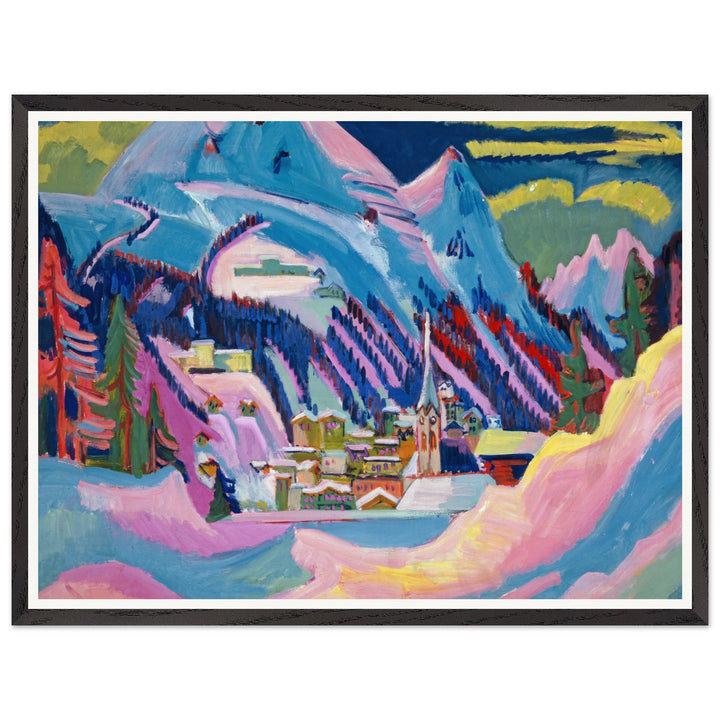Welcoming Winter...
As we transition from the vibrant celebrations of Halloween and Diwali into the colder, quieter months, the arrival of winter invites us to embrace its unique rhythms. In the northern hemisphere, shorter days and longer nights create a natural pause, encouraging us to slow down, spend quality time with loved ones, and indulge in seasonal treats. Beyond these cozy traditions, winter holds profound spiritual significance, inspiring rituals and celebrations across the world.
Winter’s stark contrast to other seasons, with its chill and darkness, has long prompted humanity to celebrate the enduring power of light. Just as Diwali symbolizes the victory of light over darkness in autumn, winter offers its own moments of illumination through solstice rituals and festivals of light that uplift and inspire.

Ernst Ludwig Kirchner, Davos in Winter, 1923
The Winter Solstice
The Winter Solstice, occurring around December 21 each year, marks the longest night and the gradual return of sunlight. Across cultures, this pivotal moment is celebrated with rituals that blend gratitude, reflection, and hope for renewal.
Dongzhi Festival
In countries like China, Japan, and Korea, the Dongzhi Festival, meaning “arrival of winter,” is a cherished family event. Families gather to enjoy comforting dishes like tangyuan (sweet glutinous rice balls), symbolizing unity and harmony. Rooted in the principles of yin and yang, Dongzhi reflects on the balance of opposites and sets intentions for health and longevity as the light begins to return.

Andō Hiroshige, Oishi Leaving Home in Snow, 19th century
Yule
In the UK and Europe, Yule is celebrated by those following pagan or nature-based spiritual paths. This ancient festival rejoices in the rebirth of the sun and the triumph of light over darkness. Traditional Yule customs include lighting candles, adorning homes with evergreens, and sharing feasts with loved ones. These practices serve as powerful reminders of hope, warmth, and renewal during the coldest days of the year.

Caspar David Friedrich, Winter Landscape, 1811
Festivals of Light
Winter’s embrace of darkness gives rise to celebrations that honor resilience and the enduring power of light.
Hanukkah
Known as the “Festival of Lights,” Hanukkah is celebrated by adherents of Judaism over eight days in late November or December. This Jewish tradition commemorates the miracle of light during the rededication of the Holy Temple in Jerusalem. Each night, a candle is lit on the menorah, symbolizing hope, perseverance, and divine presence. This act resonates deeply with winter’s spiritual theme of nurturing light amid the shadows.
Christmas
Among the most widely recognized winter celebrations, Christmas on December 25 marks the birth of Jesus Christ, whom Christians believe embodies light and salvation. The holiday is steeped in symbolism: evergreen decorations, stars, candles, and the giving of gifts all reflect themes of hope, renewal, and the triumph of good over evil. Beyond its religious significance, Christmas also inspires acts of kindness and charity, echoing the season’s focus on spreading joy and compassion.
Albrecht Altdorfer, The Adoration of the Magi, Circa 1530-1535
An Artistic Tribute to Winter
As winter deepens, it invites us to reflect on our own journeys and to celebrate the enduring light within ourselves and our communities. In the coming weeks, we’ll be sharing artwork inspired by winter’s spiritual essence, drawing from the beauty of these age-old traditions and the holiness of the season.
Whether you celebrate the solstice, light candles for Hanukkah, or prepare for Christmas festivities, winter reminds us of life’s cycles and the eternal promise of renewal. Together, let’s embrace the stillness, find meaning in the darkness, and welcome the light that’s always on its way.

